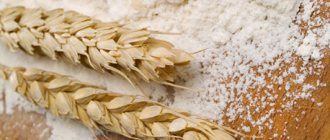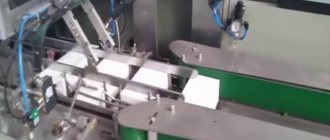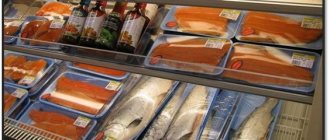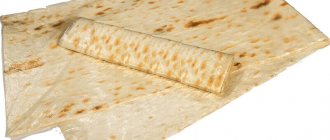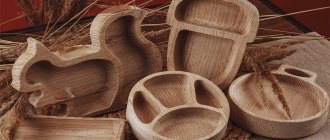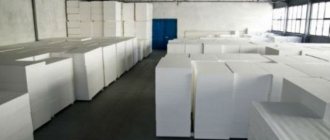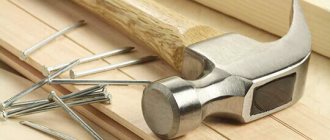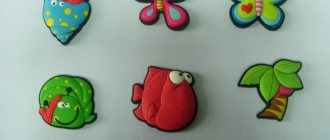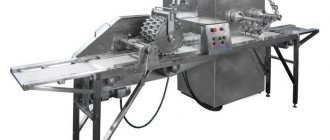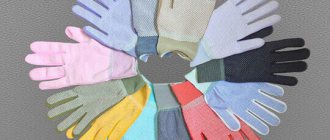Meat and bone meal is one of the most important biologically active products used to feed animals, birds, fish and plants.
The product is in demand due to its nutritional value, natural origin and ease of use.
Flour is a gray to brown powder, dry, crumbly, with a fairly pleasant aroma.
What is this product obtained from meat industry waste used for? The scope of application of flour is practically unlimited: from fuel and fertilizers to the synthesis of individual components of the product. The main direction of use is as the main ingredient in combined feed for all types of animals, birds and fish.
Advantages of increasing production of meat and bone meal
The total annual volume of animal waste in our country, according to Rosstat, is close to 5 million tons. At the same time, the deficit of food protein is more than 1 million tons, feed protein – 770 thousand tons.
Large-scale problems in the field of processing animal waste, to which the resources and efforts of processors will be directed in the near future:
- Unsustainable use of resources: cremation, burial and production of low-quality meat and bone meal from meat waste.
- Huge technological losses in processing raw materials in meat processing plants: from 0.5 kg or more per 1 kg of meat.
- Deficiency of feed animal protein in agriculture.
- Disposal of mortality in the event of epidemics of swine fever, rabid cows, etc.
The solution to the problems is to build up, modernize and open new production facilities for the production of meat and bone meal from waste from the meat processing industry.
Feasibility study of the project
Capital costs (RUB)
- purchase of the line - 3.5 million.
- line delivery, installation work - 0.25
- inventory - 0.5 million.
- repair work in the workshop and warehouse - 0.4 million.
- other expenses - 0.1 million.
In total, to start a business you will need about 4,750,000 rubles.
Calculation of revenue and profitability of activities at 50% line load is presented in the table:
| Production, tons/shift | 1,5 |
| Number of shifts | 30 |
| Monthly flour production, tons | 45 |
| Wholesale cost of flour rub/ton | 18000 |
| Monthly production of technical fat, tons | 10 |
| Wholesale cost of technical fat rub/ton | 15 000 |
| Revenue, rub. | 960 000 |
| Profitability, in% * | 25% |
| Payback, per month. | 20-24 |
Profitability indicator according to the expert opinion of the author of the article.
Manufacturing technology and composition
The raw material for the production of meat and bone meal is waste from the killing and death of farm animals and poultry, which is unsuitable for the production of food products for humans.
Technologies for the production of meat and bone meal are aimed at maximizing the preservation of proteins in the composition, because the higher the protein content, the higher the value and cost of the product.
The recycling process generally consists of three main stages , each of which has its own section of equipment:
- Reception and grinding: waste from meat production or death is collected in the reception hopper. Then they go to crushing plants, where the raw materials are crushed to the required fraction. Then the crushed mass is fed through conveyors or pumps into cooking containers.
- Heat treatment: the raw materials are boiled and sterilized in a digester. During the cooking process, saturated vapors are formed, which are disposed of in special equipment.
- Separation of flour and fat. The main condition for the quality of flour is its freedom from fat. The process is carried out by pressing. Next, the flour is cooled, crushed, sifted and tared. After pressing, the fat is fed into equipment for cleaning.
Workshop technical equipment
Let us examine in more detail the technical equipment for the production of meat and bone meal.
- The resulting raw materials must be stored under conditions that prevent them from spoiling. Accordingly, an industrial refrigerator is needed. The cost of building a refrigeration room depends on the equipment manufacturer, overall dimensions of the room, cooling power and temperature. New equipment costs from 200,000 rubles. Used equipment that will be used to get started can be found for around 60,000 rubles.
- Crushing is the first stage of raw material processing. It will require an industrial crusher. The cost of such a crusher ranges from 150,000 rubles for a low-power and used crusher to 1,000,000 rubles for a new powerful automatic crusher.
- The next stage of production is cooking the raw materials. For this you need an industrial boiler. New Russian-made boilers cost from 650,000 rubles. Not new boilers can be purchased from 250,000 rubles.
- After cooking, the raw materials must go into a centrifuge for drying and degreasing. The cost of such a centrifuge starts from 500,000 rubles for used equipment.
- The last technological stage before obtaining the finished product is final drying and crushing to the consistency of flour. You will have to spend from 200,000 rubles on this equipment if you choose not new installations.
- The final stage is packaging of finished products. Here you will need a device for packaging in consumer containers. Depending on its type, the composition of the equipment varies, but the minimum investment is 150,000 rubles.
We have described only the basic equipment. In addition to the above, you need to take care of such types of equipment as:
- conveyors for supplying raw materials;
- juice vapor condensers;
- equipment for fat processing;
- pumps for pumping viscous masses;
- tanks for storing semi-finished products and technical fat;
- mixers for mixing various additives.
The most ideal option in terms of compatibility and automation of equipment would be to purchase a ready-made line for the production of meat and bone meal. The cost of such a line starts from 5,000,000 rubles and reaches 40,000,000 rubles, depending on the tasks assigned.
Manufacturing equipment
The most common technological lines used in Russia and abroad are:
- domestic lines K7-FKE and V2-FZHL;
- Swedish Centrimille equipment from Alfa-Laval;
- Dutch lines StorkDuk.
The cost of full-cycle technological lines is quite high, and the price of imported equipment from Europe is several times higher than its Russian counterparts.
Asian manufacturers offer more reasonable prices, but complex lines are still unaffordable for domestic small and medium-sized flour producers.
Therefore, our factories often independently assemble lines of different capacities from compatible machines and devices of Russian and foreign production
Leading industry manufacturers
Clear criteria for selecting the best enterprises for the production of meat and bone meal have not been developed.
At the same level in terms of demand for products there may be specialized factories, to which raw materials are transported hundreds of kilometers, and relatively small meat processing plants that process their own raw materials.
The former have large volumes, the latter have a high protein content in the product and an ideal organization of the production process. But both types of enterprises are in demand.
There are also a number of other indicators. All manufacturers produce flour in accordance with GOST 17536-82 “Feed flour of animal origin. Technical conditions".
Based on this, it is reasonable to list the most significant factories by territorial basis, designating enterprises by district.
Central Federal District:
- Ventsanutilzavod Orlovsky (Oryol region).
- (Moscow region).
Volga Federal District:
- Dubovo-Umetsky ventilation plant (Samara region).
- Soviet Veterinary Sanitation Plant (Republic of Mari El).
- "Saria Bioindustries Volga" (Republic of Tatarstan).
Northwestern Federal District:
(Vologda region).
Siberian Federal District:
- Vetsanutilzavod Kormilovsky (Omsk region).
- (Novosibirsk region).
Southern Federal District:
- .
- Kuban environmental company (both – Krasnodar region).
The concentration of strong industries across regions is uneven, but reflects the general technical level and the availability of raw materials. The most modernized ones, working with large volumes of raw materials and producing meat and bone meal with a high protein content, are located in the Central and Volga Federal Districts.
Organizational matters
- study of the sales market and preliminary agreement with product buyers;
- search and preliminary agreement with suppliers;
- legal registration of the enterprise (read how to choose between LLC and individual entrepreneur here);
- selection of premises for production;
- equipment purchase;
- hiring staff;
- equipment startup;
- obtaining a veterinary permit and product certificate.
The choice of place and premises in which you will open the production of bone meal must be approached taking into account that the process of processing raw materials is accompanied by a specific, very unpleasant odor. The enterprise should be located as far as possible from residential areas. The room must be spacious, since the equipment occupies a significant area. In addition, it should have space for storing raw materials and finished products, as well as a rest room for workers.
Russian market: expectations and forecasts
The meat and bone meal consumption market in Russia, as well as throughout the world, depends on the volume of meat consumption .
The higher the purchasing power of the population, the more meat a person consumes.
To increase the number of livestock, a feed supply is needed. The modern meat industry is unthinkable without the use of meat and bone meal in animal feed.
Our domestic producers cannot yet meet the demand for flour for feed. Until recently, there was an increase in production in the industry, but its pace was low, so part of the flour was purchased abroad.
Livestock production in Russia has been growing steadily since 2013, and accordingly, the need for feed as sources of protein, amino acids and other ingredients is increasing.
Also, the production of meat and bone meal must increase with the growth of the livestock - this is a direct interdependence.
In recent years, Russians have begun to eat more pork and poultry - this is a cheaper product than beef. Accordingly, flour from domestic producers is most often made from pork and poultry waste.
Russian-made products are represented on the domestic market in the amount of 69.4% of its volume, mainly chicken and meat flour. Imports amount to 30.6%, with a predominance of cattle flour.
In the meat and bone meal market, a stable demand growth of 2-3% is predicted due to the stable development of livestock farming.
What is bone meal?
Bone meal is a product of processing the bones of animals and fish. The raw materials for it are bone and meat and bone remains, which are not suitable for food. For its production, animals and fish confiscated by veterinary and sanitary control, bones of sick and dead animals, or waste from meat processing plants are used.
Brief business analysis: Costs of organizing a business: 5-5.5 million rubles Relevant for cities with a population: no restrictions Situation in the industry: developed production sector Difficulty of organizing a business: 4/5 Payback: 2-2.5 years
In appearance, bone meal is an organic substance in the form of a gray-brown crumbly powder with a specific odor and the inclusion of grains up to 3 mm. In the highest quality flour there should be no more than 5%.
Sanctions and their consequences
In a number of industries, Russian producers are asking to extend the food embargo.
The share of domestic meat products in the domestic market was 90.4%.
The increase has occurred in recent years of sanctions. As a result, the threshold value of food security for meat and meat products, indicated in the doctrine as 85%, was exceeded by 5.4%.
Therefore, the head of the executive committee of the National Meat Association, S. Yushin, believes that Russia is quite capable of independently producing the required amount of meat and bone meal. Russia has enough raw materials, and therefore we do not need tens of thousands of tons of flour from the European Union.
SoyaNews analysts provided interesting figures on the production of meat and bone meal in Russia:
- in July 2020, a record flour production rate was achieved - 43.6%;
- the July 2020 figure is 1.31 times higher than in July 2020;
- volume growth for 7 months of 2020 compared to the same period in 2020 amounted to 18.9%.
SoyaNews data does not always coincide with Rosstat data, but the reliability is beyond doubt.
We need different factories
An important argument in favor of creating new industries can be made by considering the consequences of the recurring epidemics of African swine fever.
In July 2020, ASF infection spread in 13 districts of the Omsk region. Then the problem of eliminating the source of infection - that is, burning pigs - became acute. Tens of thousands of heads were burned - and this was not easy to do.
The fires were made from tires and logs; the length of the fires was up to 40 meters and at least 3 m in height.
A colossal amount of work has been done and enormous costs have been incurred. I just took the pigs to the Kormilovsky ventilation plant, where deep heat treatment was carried out.
The plant received a good product - high-quality meat and bone meal and a fee for the service of disposing of infected livestock.
At temperatures above 70 degrees, the virus dies, so the flour turned out to be safe.
The conclusion about the need for processing plants is not discussed. Such production is needed on any scale.
The best option is when mini-plants for processing animal waste are located in every rural settlement. There are many organizational difficulties in this issue , but with the participation and interest of the state it can be completely resolved.
Making a crusher for grinding bones
Take a metal container (unnecessary pan, barrel) of the required volume. In the center at the bottom, drill a hole to mount the motor, which can be taken from an old washing machine.
Next, you will need a metal plate with a length the entire diameter of the pan. A saw part can be used for this purpose. It is attached to the engine through a pulley in which 2-4 holes are drilled. The plate should extend from the bottom at a distance of 2 to 5 centimeters. To ensure the efficiency of the grinding process, the working part of the plate is sharpened.
The top of the container is closed with a special lid with a 10 cm hole. In this case, a lid from a 200 liter metal barrel is suitable. At the bottom of the pan there is a hole with a valve for the exit of the finished product. However, you can do without it; in this case, you will need to periodically open the lid and scoop out the finished flour. For ease of use, the equipment can be installed on a small table.
Grinding is also carried out using devices for processing grain crops.
The cooking procedure at home is difficult, since it is impossible to build a large fire, and the bones of cattle cannot be softened in any other way. In this case, it is suggested to choose the right ingredients that can be cooked for a long time on a regular stove. Chicken necks and fish waste will become soft when cooked. They are boiled until the desired consistency is reached, and then ground with a chopper.
It is recommended to store homemade bone meal in a dark, dry place, in a separate closed container. In this case, the powder should be periodically ventilated and ensure that it does not begin to become damp. If the humidity increases, you can burn the bone meal again.
← Return
Domestic product or import?
The Ministry of Agriculture of the Russian Federation is constantly discussing the possibility of limiting the supply of meat and bone meal from Europe, primarily from countries that supported sanctions against Russia.
Restrictions are possible; they will primarily affect producers of pet food - cats and dogs.
Pedigree, Purina, Whiskas and a number of other well-known brands purchase more than 50% of meat and bone meal imported from Europe.
And they are categorically against import restrictions. The argument is that Russian manufacturers have not yet reached the proper level of quality .
As for quality, this is a special topic for our:
- Meat holdings consider flour merely as a product of recycling unnecessary waste. Therefore, they do not engage in sorting of raw materials; quality is secondary for them.
- Small quality-oriented companies are few and far between and financially weak.
- In the Russian Federation there are no clear standards and definitions of the quality of meat and bone meal, and each manufacturer himself selects the composition of raw materials at his own discretion or based on his ideas about quality.
- Domestic equipment is designed primarily for bone processing, and the basis of high-quality flour is considered to be the meat residue on the bone.
- Foreign flour producers focus on well-established quality standards, which do not exist in Russia.
- Despite serious difficulties, a breakthrough in the quality of Russian flour is emerging. Innovative production technologies are already in use, product standards are being developed, and domestic equipment is being improved.
Flour in pet food is no more than 8%, but without it a complete food will not work, since it contains proteins.
Optimistic scenario: reorientation of companies that use imported flour to supplies from Belarus or from Asian and Latin American countries.
By the way, Belarus’ share is about 30% of all flour imports. The majority of imports are flour made in China.
Where to look for clients
The range of potential customers is determined by the scope of application of bone and meat-and-bone meal. Such products are in constant demand among livestock, fish and poultry farms. It is actively purchased by manufacturers of food for farm animals, as well as manufacturers of food for cats and dogs.
Bone meal will also be of interest to experienced gardeners and gardeners, since it is an excellent phosphorus fertilizer.
Small quantities of goods can be purchased by pet stores, as well as retail outlets selling products for the garden.
To interest potential clients, it is recommended to draw up an attractive commercial offer and develop a flexible system of discounts. This will allow the new manufacturer to quickly get used to and gain a foothold in the market.
Conclusion
The production of bone and meat and bone meal using traditional technology has one significant drawback - high energy intensity. This affects the cost of production and, as a result, the profit of the enterprise. Considering that opening a plant for processing meat and bone waste is a very expensive project, it is recommended that before starting its implementation, everything should be carefully calculated and the market thoroughly studied.
Victor Shemyakin Author #ВЗО. A young entrepreneur, he managed to open several projects of varying degrees of success. He shares his experience and opinions with our website. He will talk about what a novice businessman should know and do to make it easier to run his business and avoid possible problems.
(20 ratings, average: 4.2 out of 5)
